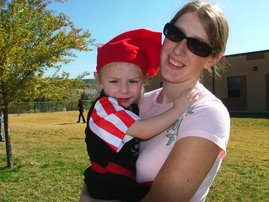Unit II Lab Project
For this project I am going to show how pulse, blood pressure and respiration rates change depending on the type of activity you are doing.
The first activity I chose was shopping-walking. The second was eating and the last one was running a half of a mile. After each activity I used a store’s machine to check what my blood pressure and pulse was. Then I also counted my respirations.
For this project I am going to show how pulse, blood pressure and respiration rates change depending on the type of activity you are doing.
The first activity I chose was shopping-walking. The second was eating and the last one was running a half of a mile. After each activity I used a store’s machine to check what my blood pressure and pulse was. Then I also counted my respirations.
This is a picture of my treadmill that This is a picture of the blood pressure machine.
I used for the running exercise.
This is a pic of grocery shopping.
 My hypothesis is that after shopping-walking my physiology levels will be about the same as resting maybe slightly higher. After eating I think they will be a little higher than normal but only a small amount. I expect the levels to be much higher after running. Than resting because your heart is pumping faster when you are really active.
My hypothesis is that after shopping-walking my physiology levels will be about the same as resting maybe slightly higher. After eating I think they will be a little higher than normal but only a small amount. I expect the levels to be much higher after running. Than resting because your heart is pumping faster when you are really active.The only problem I see with my method of collecting data results is that I’m running on my treadmill at home then driving to the grocery store to check my blood pressure. So this could affect the results because of the time it takes to get to the grocery store. To try to help them be as accurate as possible I parked in the back of the parking lot and ran into the store. Also with eating it still takes a few minutes to get to the store.
After comparing all of the data I have found that my hypothesis was correct. After each activity my physiology readings went up. They went up the most when I ran. This was the most physically exerting of the three activities which explains why the readings went up as much as they did. They only went up a little with walking-shopping. With eating they also went up but not a huge amount.
This is my graph showing the mean results for each activity. Please note that I e-mailed you the detailed chart due to difficulty uploading it thanks.
In conclusion I think it is obvious to see that the more active you are the higher your blood pressure will be. When we are active we breathe faster our heart pumps faster to keep supplying our blood with fresh oxygen and removing carbon dioxide from our blood stream. When eating your body uses energy to digest the food so I believe this is why my blood pressure and rates increased after this activity. According to the American Heart association your blood pressure will change depending on the type of exercise. “Although blood pressure goes up during any kind of exercise, the changes brought on by exercise vary according to whether the exercise is static or dynamic.” (American Heart assoc.) During dynamic exercise we use energy derived from consuming oxygen for example: running, bicycling and aerobics. So our body needs more oxygen when we are exercising. To keep up with our needs we breathe harder and our heart pumps faster. This makes our systolic blood pressure higher. Diastolic (the measurement or the resting period) stays close to the same. Pulse rate increases as well. All of this is so that our body can provide more oxygen-blood to the cells in our muscles that are performing the exercise. Static or isometric exercise does not increase your blood pressure as much. Isometric exercise is like weight lifting. The weight lifter uses curtain muscles with resistance against his force. This does not cause a person to have to use much more oxygen so in turn it doesn’t increase blood pressure very much.
Work Cited:
http://www.americanheart.org/presenter.jhtml?identifier=1200000
Work Cited:
http://www.americanheart.org/presenter.jhtml?identifier=1200000






No comments:
Post a Comment